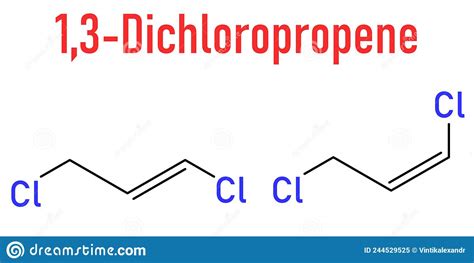News Release
The Department of Pesticide Regulation allows for 14 times more
1,3-dichloropropene in the air than the official State cancer risk level


Oxnard, CA. In June of 2022, the California Office of Environmental Health Hazard Assessment (OEHHA) issued a lifetime cancer warning level or “no significant risk level” (NSRL) for the cancer-causing pesticide 1,3-dichloropropene (aka 1,3-D, brand name Telone) of 3.7 micrograms per day.[1]
Breathing air contaminated with 0.04 parts per billion (ppb) of 1,3-D exposes one to 3.7 micrograms per day.[2]
Dow Chemical, the manufacturer of 1,3-D, argued with OEHHA that the NSRL for 1,3-D should be 50 micrograms per day, the equivalent of breathing air concentrated with 0.56 ppb of 1,3-D.[3]
Yesterday, the California Department of Pesticide Regulation (DPR) sent its new regulation for 1,3-D use regarding residential bystanders to the Office of Administrative Law, setting the target exposure level at 0.56 ppb – allowing for 14 times more 1,3-D in the air than the State’s official lifetime cancer risk warning level, and aligning perfectly with Dow Chemical’s stated desires.[4]
“Dow got what they wanted. Farmworker communities like mine got the promise of more cancer,” said Teresa Gomez, organizer of the local pesticide reform group, the Ventura County Coalition Advocating for Pesticide Safety (CAPS 805). “This is a case of putting corporate profits over Latino and Indigenous health. It’s a case of environmental racism.”
The 1,3-D air concentration at the state pesticide air-monitor located on the grounds of Rio Mesa High School has exceeded OEHHA’s NSRL for cancer in all but one year since testing started in 2012, averaging 0.12 ppb[5] – 3 times higher than the safe level. This pesticide air monitor is one of only six active in the State, and 1,3-D use is even higher in the township to the south (#01N-22W, 86,752 pounds in 2020) of the one in which Rio High sits (#02N-22W, 38,665 pounds in 2020). That southern county township contains Lemonwood, Mar Vista, and Tierra Vista Elementary Schools, among other vulnerable sites.[6]
“Working in Ventura County over the years as a substitute teacher, you hear of so many students and staff at schools near the fields who have cancer,” said Ventura area education worker Kari Aist. “Most of those kids are people of color. Rio Mesa High, for instance, surrounded by fields, is 94% people of color. Those are the kids who will continue to be exposed to 1,3-D. DPR’s regulation is a policy of environmental racism.”
The bulk of 1,3-D use has been in southern Ventura County. The screenshot below from the California Department of Public Health Pesticide Mapping Tool shows 1,3-D use in 2018 by 6-mile squares called “townships” by DPR. The Environmental Working Group found similar patterns of overall toxic pesticide use concentrated in these regions with high Latino & indigenous populations.[7]
Maria Navarro, the Oxnard Policy Advocate for CAUSE commented: “DPR has continued to marginalize Latino and Indigenous farmworker communities by upholding a regulation that weakens the standard of protections by allowing 1,3-D to be applied in inexcusable amounts. This affects our students and pregnant farmworkers, and continues the legacy of environmental racism in our communities.”
What is 1,3-dichloropropene?
The pesticide 1,3-dichloropropene or 1,3-D was first registered in the US in 1954 (California, 1970) as a soil fumigant used to control nematodes. It has been manufactured by Dow Chemical under the brand Telone II.[8] 1,3-D is a colorless to straw-colored liquid with a sharp, sweet, irritating odor. It is a drift-prone fumigant pesticide used to kill organisms in the soil prior to planting, applied mostly on strawberry fields in Ventura County.
The fumigant is Injected into the ground or applied by drip lines and typically—but not always–covered with tarps. 1,3-D drifts initially from wind and later from volatilization for many miles at health-harming concentrations. The pesticide may also get into our water supply, as did a previous version of Telone discontinued in the late 1980s, which contained the carcinogen 1,2,3-TCP that persists in some California water systems to this day.[9]
What are the health risks associated with 1,3-D?
Acute harms include immediate exposure symptoms from high air levels due to drift: irritation of skin and nose, as well as possible slow weight gain in infants. Very high exposure to 1,3-D, such as a spill, can cause nausea, vomiting, headache, depression and damage to liver, intestines, and bladder, and difficulty breathing.[10]
The long-term health threats from chronic exposure to even tiny amounts of 1,3-D over time can cause cancer, damage to the lining of the nose, and may pollute groundwater. 1,3-D is listed as a Prop 65 carcinogen and a Toxic Air Contaminant by the State of California.[11]
1,3-D is banned in 34 countries,[12] but not in the US. The pesticide was prohibited in California between 1990 and 1995 after high air concentration levels were recorded in the Central Valley.[13]
###
Californians for Pesticide Reform is a diverse, statewide coalition of 200+ member groups working to strengthen pesticide policies in California to protect public health and the environment. Member groups include public and children’s health advocates, clean air and water groups, health practitioners, environmental justice groups, labor, education, farmers and sustainable agriculture advocates from across the state. CAPS 805 is the Ventura County regional affiliate of Californians for Pesticide Reform with organizational members including CAUSE, MICOP, SURJ, Lideres Campesinas, and Regenerate Ojai, among many others.



